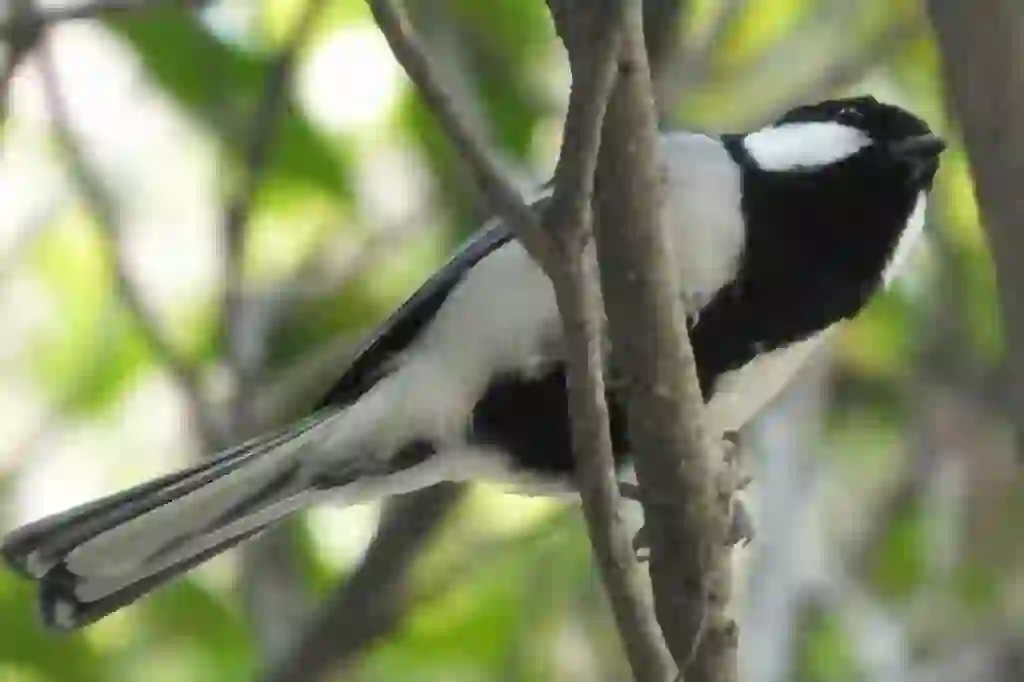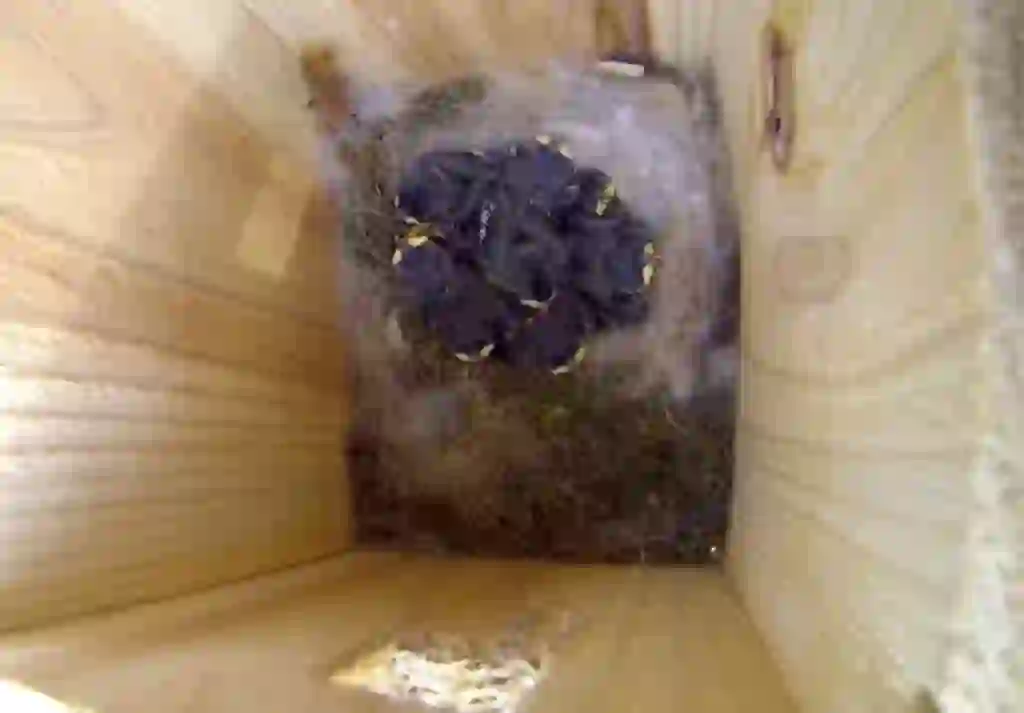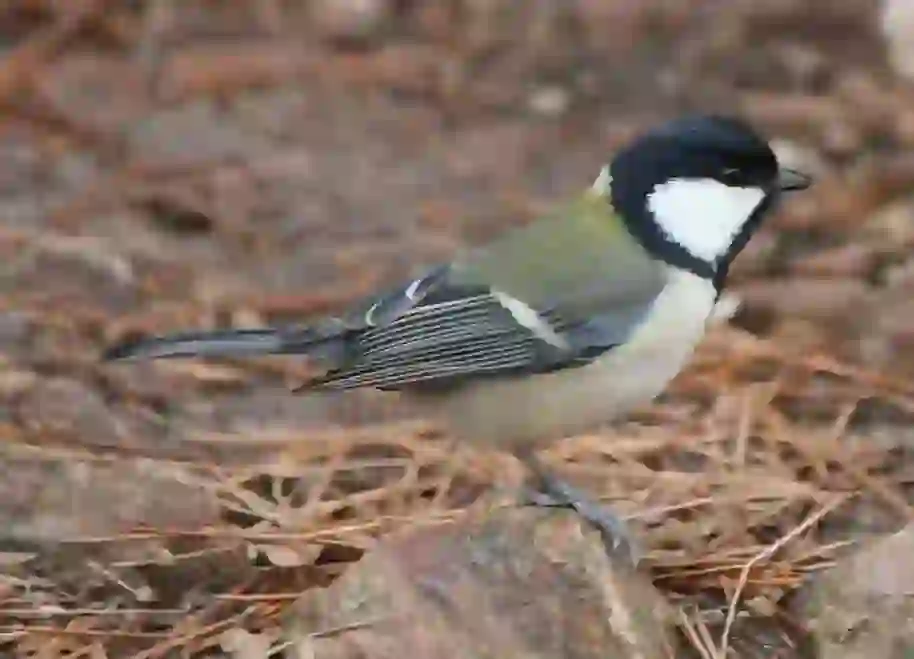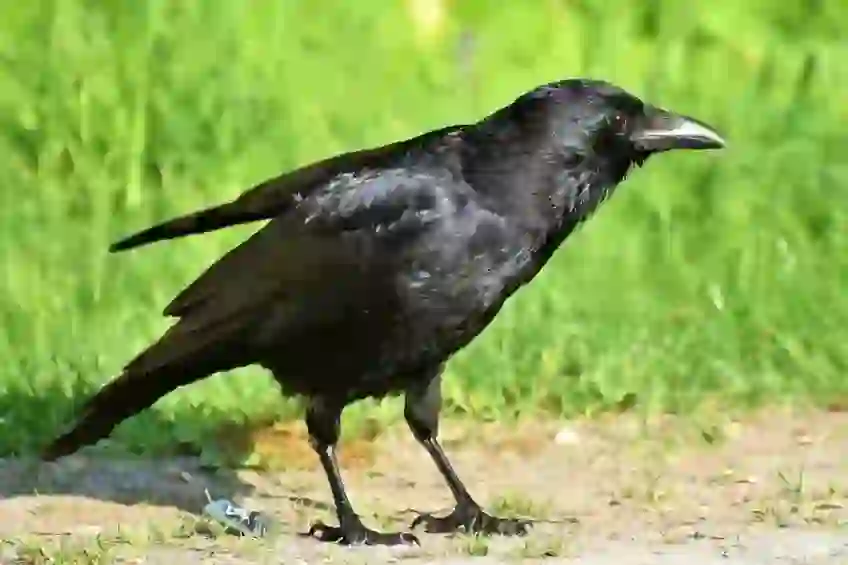
Japanese Tit
Japanese Tit
Japanese Tit
What bird comes to mind when you think of the ones most familiar to us? Sparrows? Or perhaps crows? However, let’s not forget about the Japanese Tit. Indeed, it might not be as famous as sparrows, crows, or pigeons, and some people may not recall what it looks like at once. However, the markings of the Japanese Tit are quite impressive. Once you recognize it as a 'Japanese Tit', you're sure to notice them more often around the city! This time, we'll introduce the lovely Japanese Tit, discussing its ecology and remarkable abilities. Please remember this the next time you see one in the city!
Japanese Tit Basic Infomation

Order: Passeriformes, Family: Paridae, Genus: Parus
Total length: about 14.5 cm
Weight: about 15 g
A notable feature of the Japanese Tit is its appearance. It is generally monochrome but has a yellow-green back. Its white cheeks and vivid back are very charming.
However, the most eye-catching feature is the black line running from its chest to its belly, resembling a necktie. This line is thicker in males than in females, and more distinct in adults than in juveniles.
The Japanese Tit's small stature adds a surprising element to its crisp style, almost as if a child is stretching up tall.
Including close relatives, the Japanese Tit is distributed worldwide, including East Asia, parts of Russia, parts of the Eurasian continent, and North Africa.
In Japan, it is widely distributed nationwide and has four subspecies that live as resident birds. They inhabit a wide range of habitats from low mountains and forests to wetlands and urban areas.
During the non-breeding season from autumn to winter, they form flocks of several to several dozen birds. Other species from the Paridae family also join these flocks, so you might see birds that are not Japanese Tits among them!
During the breeding season, they form pairs and have territories, nesting in tree holes or crevices in rocks. They also nest in nest boxes, so if you are interested, it might be a good idea to install one!
Japanese Tit Q&A

What is the origin of the Japanese Tit's name?
The Japanese Tit is written as '四十雀' in Kanji, and there are several theories about its name's origin.
One theory suggests the name was given because 'one Japanese Tit is worth forty sparrows'. However, this origin is unclear, and it is not known what exactly 'worth forty sparrows' means.
Another theory is that it was named for its behavior of forming flocks. Japanese Tits form large flocks during the non-breeding season from autumn to winter, which may have influenced their naming.
Sometimes these flocks are quite large, and the sight of them perched in trees is striking enough to inspire their name.
Lastly, there's a theory based on their calls. The Japanese Tit makes various sounds, and one of their calls sounds like 'Jiji'. This sound might have evolved into the name 'Shijukara'.
This last reason seems most plausible because the Japanese Tit is known for its distinctive calls. If you see one, take a moment to listen to its beautiful song!

What does the Japanese Tit eat?
The Japanese Tit is omnivorous and eats a variety of things. Insects are the most common part of their diet, with one bird eating up to 125,000 insects in a year.
Such a number might seem staggering, but it helps control insect populations to a beneficial extent.
You might wonder why they eat so much. Japanese Tits are active and naturally need a lot of energy for flying, which explains their high insect consumption.
However, they need to be light for flight, which means they also defecate frequently. While they can be seen as 'godsend birds' to those who dislike insects, their droppings might be a nuisance.
In winter, when insects are scarce, they switch to eating fruits and seeds. They eat both on the ground and in trees, though they tend to eat more on the ground during winter.
They don't store food for the winter but have been observed stealing stores from other birds, showing a cheeky side to their otherwise gentlemanly appearance.

What is the relationship between the Japanese Tit and the Varied Tit?
The Varied Tit is another bird with a similar name, which might suggest a close relationship. However, they are quite different.
While they are similar in size, their markings are quite distinct. The Japanese Tit has a monochrome face with notable white cheeks, whereas the Varied Tit has a pale blue head with enchanting black eye-lines and lacks the 'necktie' pattern found in the Japanese Tit, having a completely white belly instead.
There are also slight differences in their habitats. Japanese Tits are commonly seen in urban areas, while Varied Tits are more common in mountains and forests and are popular among bird watchers but less familiar to the general public.
Moreover, they belong to different families, making them not so closely related.

Is it true that the Japanese Tit has a high linguistic ability?
Despite its neat appearance, research has shown that the Japanese Tit possesses significant linguistic capabilities. They not only call but combine sounds into complex messages to communicate with their peers.
When the combinations of sounds change, so does the response from other Japanese Tits, suggesting a sophisticated level of communication.
For example, parent birds alert their chicks to dangers with specific calls, prompting them to take appropriate defensive actions. They crouch to hide from crows and flee from the nest in response to snakes.
This behavior essentially translates to vocal messages like 'Hide, a crow is coming!' or 'Escape, a snake is approaching!'
This kind of sophisticated communication was previously known only in highly intelligent animals like chimpanzees. The Japanese Tit is among the few species that can rearrange syntactic structures to understand vocalizations.

What are the natural predators of the Japanese Tit?
Japanese Tits face many predators as they are not very strong birds. Common threats include snakes, crows, and birds of prey like falcons.
These predators typically attack the chicks rather than adult birds.
Although their high linguistic ability allows them to perceive danger, it is not foolproof. Many chicks are preyed upon before they can grow.
Surviving in the wild requires not just individual cleverness or tricks but also a bit of luck.

What is the lifespan of the Japanese Tit?
The lifespan of a wild Japanese Tit is about one and a half years. However, this figure does not reflect natural aging but rather the harsh realities of their environment.
They face numerous dangers such as predators like snakes and crows, extreme weather conditions, and food scarcity during winter, leading to competition with other species.
Under less harsh conditions, they could live for about seven to ten years, illustrating the severity of their natural environment.

Would you like to become a part of the 'Animalbook.jp'?
Turn your knowledge into Q&A and share it with the world. ※Publication will be activated after purchase. Let's share information together!
Japanese Tit Type of List

We introduce species belonging to the Paridae family.
*Only species with Japanese names are listed.
- Marsh Tit
- Southern Marsh Tit
- Balkan Marsh Tit
- Willow Tit
- Siberian Willow Tit
- Carolina Chickadee
- American Chickadee
- Grey-headed Chickadee
- Mexican Chickadee
- Oak Titmouse
- Chestnut-backed Chickadee
- Siberian Tit
- Black-capped Chickadee
- Mountain Chickadee
- Great Tit
- Crested Tit
- Coal Tit
- Yellow-bellied Tit
- Varied Tit
- Palawan Tit
- Crested Tit
- Grey-crested Tit
- Japanese Tit
- Sombre Tit
- White-bellied Tit
- Black Tit
- Sooty Tit
- Grey Tit
- Japanese Tit
- Variegated Tit
- Yellow-cheeked Tit
- Black-breasted Tit
- Somali Tit
- Northern Grey Tit
- Sooty Tit
- Grey Tit
- Japanese Tit
- Yellow-bellied Tit
- Black-backed Tit
- Taiwanese Tit
- White-backed Tit
- Azure Tit
- Blue Tit
- White-faced Nuthatch
- High Nuthatch
- Nuthatch
- Black Nuthatch
- Eyebrowed Tit
- Sultan Tit
Information
Congratulations! You are the first commenter!

Create Your Favorite List!
Japanese Tit
Save the animals you love! Build your own list to quickly revisit your favorites later.

Would you like to leave a comment?
※Please note: This is for the purchase of rights to post comments within the article.
Find Your Favorites!
Our shop offers a unique and attractive selection of goods themed around various animals.
Japanese Tit References

- サントリーの愛鳥活動 https://www.suntory.co.jp/eco/birds/encyclopedia/detail/1430.html
- Wikipedia https://ja.wikipedia.org/wiki/シジュウカラ
- CANON BIRD BRANCH PROJECT https://global.canon/ja/environment/bird-branch/photo-gallery/shijukara/index.html
- 森と水の郷あきた http://www.forest-akita.jp/data/bird/42-shigyukara/kara.html
- 鳥ずかん(教育出版) https://www.kyoiku-shuppan.co.jp/docs/pages/rika/guide/bird/sijukara.html
- NATURE LAND NOSE https://natureland-nose.com/bird/lecture_bird/3539/
- 野鳥情報.com https://yacho-joho.com/shijuukara-gojuukara-chigai-miwakekata/
- とりのる https://torinoru.com/blog/life-span/
Japanese Tit Introduction of media used

出典:https://commons.wikimedia.org/wiki/File:シジュウカラの背中3.JPG

similar
出典:https://commons.wikimedia.org/wiki/File:Kleiber_Sitta_europaea.jpg

enemy
出典:https://pixabay.com/images/id-3448199/

enemy
出典:https://pixabay.com/images/id-3616708/

Help Enrich Our Animalbook.jp with Your Media!
We are constantly looking to expand and enrich our Animalbook.jp with amazing photos and videos of animals. If you have any media that you'd like to share, please contribute and help us showcase the beauty and diversity of the animal kingdom. Your submissions will be credited and featured in our encyclopedia, reaching a wide audience of animal lovers.





















